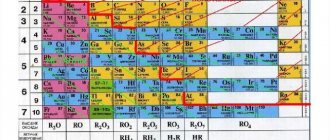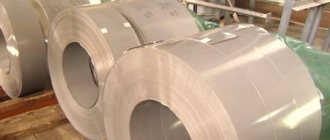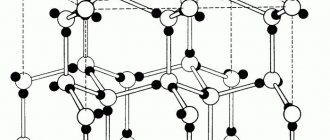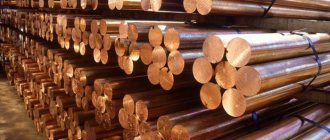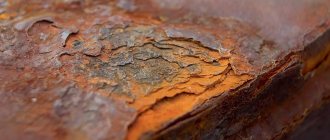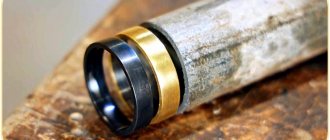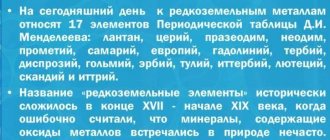Passivation, (or passivation) of metals is a special treatment, during which the outer layer of the material acquires new properties that make the metals similar to noble ones - that is, not amenable to oxidation or any other negative effects on it.
During processing, oxide films are formed on the surface. And if this film is not somehow damaged by rough physical impact, then any metal that previously required special operating conditions becomes protected and resistant to them.
Essence and description of the process
To protect against corrosion or other types of chemical damage, a phase or adsorption layer (film) is formed on the metal surface. Technically, this looks like applying such a protective coating using special solutions (chemical passivation) or resorting to creating a protective barrier in other ways (electrolytic passivation).
Electrolytic is preferable as it is more chemically resistant.
The goal of the process is to reduce the chemical activity of metals with the possibility of preserving them. After all, losses from corrosion both from atmospheric influences and from reagents in technological processes around the world can reach tens of billions of dollars. And to protect these metals, almost each of them has its own mechanism for applying protective layers (because there are no universal methods; each metal requires its own approach). In practice, this resulted in the development of special exposure modes, unique electrolyte compositions, and calculation of voltage and current for each specific case of applying films to metal.
Passivation of a metal can be thought of as the formation of a kind of rust on its surface. Only this “rust” is man-made and has predetermined properties.
Chemical passivation
This is the treatment of metals with solutions of compounds that can quickly form an oxide surface. But so that the process does not go deeper, especially actively destroying weak points in the crystal lattices of metals. At a certain stage, it is stopped by using neutralizing substances, and then subjecting the metal to washing in different environments and at different temperatures.
A typical picture might look like this:
- cleaning the surface of the metal intended for passivation with abrasive materials;
- degreasing the surface with caustic soda or soda ash;
- removal of degreasing substances along with the compounds dissolved by them with the pressure of hot and then cold water;
- passivation with a composition suitable for a given metal in a pre-calculated time"
- neutralization of the chemical reagent-passivator with soda ash;
- rinsing in running cold water"
- drying by blowing warm or hot air;
- visual and instrumental control of the surface, including using optical sensors tuned to the typical structure of the resulting oxide film.
If the quality of the results obtained is unsatisfactory, the process is repeated, starting with abrasive cleaning.
Electrolytic passivation
It is based on the property of metals to pass through an electrolyte with an applied voltage to the surface of the metal being processed. For each specific type of metal, an electrolyte unique to it is selected. And a metal suitable for its physical and chemical properties is also used as an anode.
During anodic passivation, the polarizing current must exceed a certain critical value, at which the nature of the metal, electrolyte, its temperature and concentration begin to work to cover the metal immersed in the bath with a protective film. Which prevents a reverse “ionic current” from occurring. This moment is the beginning of the formation of an “impenetrable” oxide layer, against which oxidizing substances are powerless. In addition to the most aggressive ones, for which special passivation modes and special substances will be provided for it.
Passivization: steel acquires the properties of gold
The purpose of passivation is to create a man-made “anti-rust” on the metal surface, which reduces the chemical reactivity of the material.
During this procedure, the outer layer of the processed materials acquires characteristics that make them similar to noble metals - they become resistant to oxidation and other aggressive influences.
It should be noted that there are no universal passaging methods - each metal needs its own approach. In practice, this is reflected in the preparation of special compositions of electrolytes, the development of individual exposure modes and the calculation of current indicators for each individual metal passivization procedure.
To create phase or adsorption films that form a dense barrier to corrosion, an electrochemical or chemical method is used.
Electrochemical method: using electrolyte and current
This method is based on changing the properties of metals when they are immersed in an electrolyte and galvanized. In this case, for each individual case the electrolyte is selected individually. The anode is a metal that, in its chemical and physical parameters, meets the objectives of passaging.
The metal is immersed in a bath of electrolyte, after which a polarizing current of a given strength and voltage is applied. The result of the procedure is the appearance of a film on the surface of the product that prevents the occurrence of reverse “ionic current”. This promotes the formation of an oxide layer that successfully resists the effects of oxidizing agents.
The electrochemical method is used to pass copper using chromium-containing compounds. To create an oxide film on zinc, sulfuric acid and sodium dichromate are used; for aluminum, a hydrogen fluoride composition is used.
Chemical method: oxidize to protect against oxidation
This method involves the use of oxidizing solutions, which, when interacting with the metal, form an oxide film on its surface. To ensure that the process is controlled and oxidation does not affect deeper layers, special neutralizing compounds are used.
The chemical passaging procedure includes the following steps:
- cleaning the surface using abrasive materials followed by degreasing;
- rinsing off degreasing compounds first with hot, then cold water;
- applying the reagent for a specified period of time;
- the use of soda ash as a neutralizer for a chemical passivator;
- washing in cold water using the in-line method, drying with warm air;
- the use of optical sensors to control surface properties.
If instrumental and visual control gives unsatisfactory results, then the procedure is repeated again, starting from the first step.
Passivation of steel
Iron, which is part of any type of steel, as its basis, is subject to corrosion more than any other metal. The best protection against corrosion for iron-containing materials is the addition of alloying additives to the iron melt, which make the steel stainless. But stainless steel is expensive. Therefore, simpler grades of steel can be protected from rust by treating them in electrolytic baths with the addition of inhibitory pigments in the form of red lead - iron or lead - to the electrolyte.
| These pigments can also work as chemical passivators, without the use of a complex mechanism for connecting them with the metal being coated. The application of such pigments is carried out with ordinary painting supplies, and is usually associated with the large dimensions of the treated surfaces, which cannot be placed in an electrolytic bath (hulls of all types of ships). But in this case the protective effect will be weaker. |
During anodic coating with the help of pigments in the boundary treated outer layer, a high current density occurs in the pores of the formed protective film. In iron, as part of a steel alloy, protective oxide films cannot be formed under natural conditions, so passivation is possible only if inhibitor pigments are included in the coating mechanism.
But the main difference in the formation of protective layers on metal by chemical and electrolytic passivation methods lies in the speed of the process and the strength of the formed phase film. After all, both in a chemical bath and in it, but with electric current and voltage added to the process, the process of formation of an oxide or salt film follows the same scenario.
Types of passivation
The main and most well-developed types of passivation are:
- chemical;
- electrochemical.
Chemical
Chemical passivation involves the use of solutions of salts of various metals. The most effective passivation is carried out with nitric acid. In addition, sulfuric acid or citric acid is used to form a solution. To improve the quality of the process, a small amount of sodium bichromate is added to the solution. Its amount does not exceed 6% of the total mass. The composition of the solution is selected individually and largely depends on the type of metal being processed. For example, to passivate iron, metal salts dissolved in high concentration sulfuric acid are used.
The essence of chemical passivation is the active attraction of negative ions that are present in the solution to metal atoms. This occurs due to the presence of a positive charge. As a result of such diffusion, a surface layer is formed.
For passivation, it is necessary to carry out preliminary preparation of the surface of the product. It is thoroughly cleaned using mechanical and chemical methods. The final result and the reliability of the formed film depend on the quality of this procedure. This is of great importance when passivating non-ferrous metals: brass, copper, bronze.
Electrochemical
This type of passivation is based on the principles laid down in the technique of galvanic processing of products. Acceleration of processing is carried out due to the influence of direct current, which flows through the solution, accelerating the chemical reaction. This passivation is called electrochemical.
In addition to the bath in which the electrolyte is placed, such an installation uses a direct current source, connecting wires and one electrode. The second electrode is the part itself. Another contact option is one electrode and the body of the bath (it must be made of metal resistant to electrolyte and electric current). In practice, electrical installations with a relatively low voltage level are used. Its value does not exceed 12V.
In both cases, when the installation is turned on, an electric current is passed through the solution. It stimulates the passivation process on the surface of the workpiece. In practice, I distinguish between anodic and cathodic passivation.
With this passivation, a positive potential is applied to the workpiece, and a negative potential is applied to the bath body. When using the electrochemical method, the protective film is formed faster and is more even. But this technology is more expensive than chemical passivation, since it uses more complex equipment and consumes electricity. Under its action, the protective film is uniform. This is how a film is formed on the surface of copper blanks. Current is passed through solutions with chromium salts dissolved in them. It is in them that copper acquires the greatest resistance to corrosion.
Important parameters in this process are the passivation time, the density and composition of the electrolyte, and the critical value of the passivation current. These parameters are calculated for various metals and are given in special tables. Based on these data, the allowable processing time is calculated.
Passivation of structural and special steels
For reliable passivation of steels, it is advisable to pre-coat them, all or partially (those elements that will experience the greatest impact of adverse factors) with nickel, zinc or cadmium using chromium salts. Passivation with these salts is advantageous in that, after strengthening the surface layer, the products can be used for a very long time without the risk of corrosion. And if individual sections begin to rust, they can be passivated, without disassembling or removing the structure, with the same composition with chromium salts right on the spot, by applying overlays soaked in solutions.
Contents of passivation compositions
The composition of solutions for passivation of non-ferrous metals most often includes potassium and sodium chromates, as well as chromic anhydride as the main reagent. To create an acidic environment, various acids and salts are added to such electrolytes, the composition of which affects the speed of creation and uniformity of the protective film. Copper passivation is carried out in solutions containing small amounts of sulfuric acid. When processing aluminum, phosphoric acid is included in the electrolytes, and additives in the form of nitric and sulfuric acids are used to passivate zinc and cadmium. The content of passivating solutions for processing steel products depends on their composition and often includes nitric acid and its salts.
All chromium salts (especially hexavalent) are very toxic. Therefore, chrome passivation of metal products can only be carried out in specialized industries that have appropriate cleaning and drainage systems, as well as specially trained personnel.
Nowhere is it written how passivation with chromium salts is carried out directly at the installation sites of the equipment. How are chemicals removed in these cases? Or are other compounds used for this treatment? If anyone has information on this issue, please share it in the comments to our article.
Aluminum passivation
On aluminum, an oxide and very durable film is formed under natural conditions under the influence of atmospheric oxygen. Many people remember the school experience when a small layer was removed from an aluminum wire dipped in mercury using a file, and then this file-treated tip was removed from the mercury. And the treated end in air was instantly covered with a “fur coat” of oxide crystals. But under normal atmospheric conditions, oxides do not form on aluminum so quickly and take the form of a transparent film with a thickness of only a few microns. In its properties it is very close to the chemically inert aluminum oxide corundum. The disadvantage of such a natural film is its instability with a significant increase in temperature or with prolonged exposure to active acids.
For lasting protection, one cannot do without the anodizing process, which results in protective films with a thickness of 5 to 20 microns. And in certain modes it is possible to obtain ultra-strong films (withstanding loads of up to 1500 kg per mm, that is, higher than that of tool steel.
Aluminum corrosion
Aluminum corrosion is the destruction of metal under the influence of the environment.
For the reaction Al 3+ +3e → Al, the standard electrode potential of aluminum is -1.66 V.
The melting point of aluminum is 660 °C.
The density of aluminum is 2.6989 g/cm 3 (under normal conditions).
Aluminum, although an active metal, has fairly good corrosion properties. This can be explained by the ability to passivate in many aggressive environments.
The corrosion resistance of aluminum depends on many factors: the purity of the metal, the corrosive environment, the concentration of aggressive impurities in the environment, temperature, etc. The pH of solutions has a strong influence. Aluminum oxide forms on the metal surface only in the pH range from 3 to 9!
The corrosion resistance of Al is greatly influenced by its purity. For the manufacture of chemical units and equipment, only high-purity metal (without impurities), for example, AB1 and AB2 aluminum, is used.
Corrosion of aluminum is not observed only in those environments where a protective oxide film is formed on the surface of the metal.
When heated, aluminum can react with some non-metals:
2Al + N2 → 2AlN – interaction of aluminum and nitrogen with the formation of aluminum nitride;
4Al + 3С → Al4С3 – reaction of interaction of aluminum with carbon with the formation of aluminum carbide;
2Al + 3S → Al2S3 – interaction of aluminum and sulfur with the formation of aluminum sulfide.
Passivation of silver
Silver is a noble metal, despite changes in its properties in the light (it darkens). Before the advent of digital photography, this ability of silver was used in the creation of light-sensitive materials (film and photographic paper).
But the darkening of silver products in everyday life is often an undesirable process, and to prevent it, chemical methods are used to protect the upper layer of metal, bordering with air, from exposure to light and air. The best way to prevent such changes is passivation by treating silver in a chromium peak - potassium dichromate K2 Cr2 O7.
To carry it out, 60 g of chrompic is diluted in 1 liter of boiled, soft water. The working temperature of the solution is from 25 to 40 degrees, this is not critical. Passivation is carried out by simply immersing the silver item in the bath completely for 20 minutes and periodically stirring the solution. In cases where the diluted amount of chromium does not completely cover the product (a figurine of a complex shape or a voluminous silver candelabra), it is better not to practice alternating surface treatment in parts, but to dilute the reagent in the amount of water required for the normal volume.
Interaction of aluminum with complex substances
with water
As mentioned above, a stable and durable oxide film of Al2O3 prevents aluminum from oxidizing in air. The same protective oxide film makes aluminum inert towards water. When removing the protective oxide film from the surface by methods such as treatment with aqueous solutions of alkali, ammonium chloride or mercury salts (amalgiation), aluminum begins to react vigorously with water to form aluminum hydroxide and hydrogen gas:
with metal oxides
After igniting a mixture of aluminum with oxides of less active metals (to the right of aluminum in the activity series), an extremely violent, highly exothermic reaction begins. Thus, in the case of interaction of aluminum with iron (III) oxide, a temperature of 2500-3000 o C develops. As a result of this reaction, high-purity molten iron is formed:
This method of obtaining metals from their oxides by reduction with aluminum is called aluminothermy or aluminothermy.
with non-oxidizing acids
The interaction of aluminum with non-oxidizing acids, i.e. with almost all acids, except concentrated sulfuric and nitric acids, leads to the formation of an aluminum salt of the corresponding acid and hydrogen gas:
2Al 0 + 6H + = 2Al 3+ + 3H2 0 ;
with oxidizing acids
-concentrated sulfuric acid
The interaction of aluminum with concentrated sulfuric acid under normal conditions and at low temperatures does not occur due to an effect called passivation. When heated, the reaction is possible and leads to the formation of aluminum sulfate, water and hydrogen sulfide, which is formed as a result of the reduction of sulfur, which is part of sulfuric acid:
Such a deep reduction of sulfur from the oxidation state +6 (in H2SO4) to the oxidation state -2 (in H2S) occurs due to the very high reducing ability of aluminum.
- concentrated nitric acid
Under normal conditions, concentrated nitric acid also passivates aluminum, which makes it possible to store it in aluminum containers. Just as in the case of concentrated sulfuric acid, the interaction of aluminum with concentrated nitric acid becomes possible with strong heating, and the reaction predominantly occurs:
- dilute nitric acid
The interaction of aluminum with diluted nitric acid compared to concentrated nitric acid leads to products of deeper nitrogen reduction. Instead of NO, depending on the degree of dilution, N2O and NH4NO3 can be formed:
Chemical passivation of stainless steel
Despite the fact that stainless steel, both in its mass and in the surface layer, is already inactivated in the sense of exposure to unfavorable environmental conditions, sometimes corrosion finds weak points in this steel.
Steel is made from iron by alloying additives. And the main additive that makes steel stainless is chromium. But with its 12% content in the alloy, it will only protect the steel from atmospheric influences. At 17% it will already withstand treatment with nitric acid, one of the most aggressive acids.
It also depends on the condition of the surface of the stainless material. And if the surface layer is damaged, if it has deep scratches, burrs, microscopic impact craters, then even alloyed metal will be susceptible to corrosion.
And sometimes a weld on the surface is enough. And even though welding is also performed with special electrodes and in a special mode, the pure iron formed in the weld will become the center of corrosion, which will take on a chain character. What about welding? Even if you cut or saw ordinary, unalloyed steel next to a stainless steel structure, then sawdust, shavings and any form of particles from it that fall on the stainless steel will also quickly become such centers.
What causes the high corrosion resistance of stainless steels?
The essence of such a phenomenon as corrosion is that the surface of the metal begins to deteriorate under the influence of negative external factors and the environment. Typically, corrosion due to constant oxidation affects the metal layer by layer, gradually destroying the internal structure of the steel. In many cases, it no longer makes sense to localize the affected areas of the internal structure of the metal, so steel products have to be replaced with new ones.
» data-lazy-type=»iframe» src=»data:image/gif;base64,R0lGODlhAQABAIAAAAAAAP///yH5BAEAAAAALAAAAAABAAEAAAIBRAA7″>
Passivation (or passivation), as a technology that allows for reliable protection of steel from corrosion, underlies the creation of such a unique metal as stainless steel. The chemical composition of the vast majority of steels belonging to the stainless category may contain various elements:
- nickel;
- molybdenum;
- cobalt;
- niobium;
- manganese.
However, the main alloying element of such steels, the amount of which in their composition can vary between 12–20%, is chromium. The addition of various alloying elements to the composition of stainless steels makes it possible to give them the required physical and chemical characteristics, but it is chromium that is responsible for the corrosion resistance of the steel alloy.
The effect of chromium on the properties of stainless steel
Stainless steel alloys, which contain 12% chromium, exhibit high corrosion resistance only when interacting with ambient air. If the amount of chromium in the chemical composition of stainless steel is increased to 17%, then products made from it can easily interact with nitric acid without losing their performance characteristics.
To make the metal resistant to even more aggressive environments, which include hydrochloric, sulfuric and other acids, the quantitative content of chromium in it is not only increased, but also elements such as copper, molybdenum, nickel, etc. are added to its composition. In other words , they passivate the metal, that is, increase its passivity to corrosion processes.
During the process of passivation of the weld zone, a strong film is formed
Passivation, in which appropriate alloying elements are added to the chemical composition of stainless steel, is not the only condition for high corrosion resistance of the metal. In order for the protective properties of stainless steel to remain at a high level, the oxide film on its surface, consisting mainly of chromium oxide, must be intact, have a uniform chemical composition and thickness.

